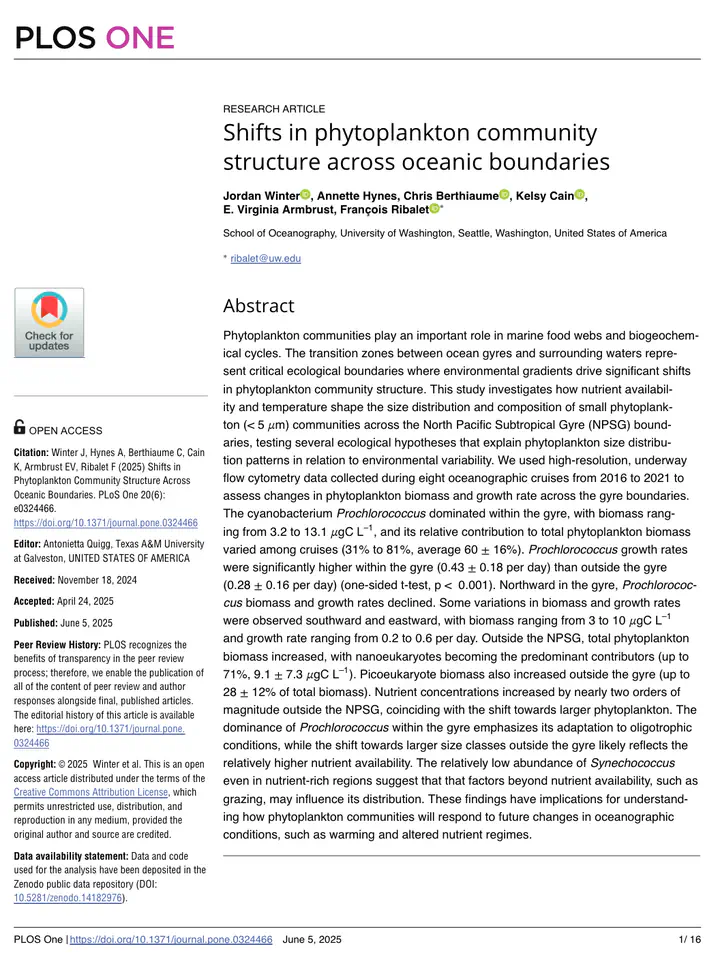
Abstract
Phytoplankton communities play an important role in marine food webs and biogeochemical cycles. The transition zones between ocean gyres and surrounding waters represent critical ecological boundaries where environmental gradients drive significant shifts in phytoplankton community structure. This study investigates how nutrient availability and temperature shape the size distribution and composition of small phytoplankton (< 5 μm) communities across the North Pacific Subtropical Gyre (NPSG) boundaries, testing several ecological hypotheses that explain phytoplankton size distribution patterns in relation to environmental variability. We used high-resolution, underway flow cytometry data collected during eight oceanographic cruises from 2016 to 2021 to assess changes in phytoplankton biomass and growth rate across the gyre boundaries. The cyanobacterium Prochlorococcus dominated within the gyre, with biomass ranging from 3.2 to 13.1 μgC L−1, and its relative contribution to total phytoplankton biomass varied among cruises (31% to 81%, average 60 ± 16%). Prochlorococcus growth rates were significantly higher within the gyre (0.43 ± 0.18 per day) than outside the gyre (0.28 ± 0.16 per day) (one-sided t-test, p < 0.001). Northward in the gyre, Prochlorococcus biomass and growth rates declined. Some variations in biomass and growth rates were observed southward and eastward, with biomass ranging from 3 to 10 μgC L−1 and growth rate ranging from 0.2 to 0.6 per day. Outside the NPSG, total phytoplankton biomass increased, with nanoeukaryotes becoming the predominant contributors (up to 71%, 9.1 ± 7.3 μgC L−1). Picoeukaryote biomass also increased outside the gyre (up to 28 ± 12% of total biomass). Nutrient concentrations increased by nearly two orders of magnitude outside the NPSG, coinciding with the shift towards larger phytoplankton. The dominance of Prochlorococcus within the gyre emphasizes its adaptation to oligotrophic conditions, while the shift towards larger size classes outside the gyre likely reflects the relatively higher nutrient availability. The relatively low abundance of Synechococcus even in nutrient-rich regions suggest that that factors beyond nutrient availability, such as grazing, may influence its distribution. These findings have implications for understanding how phytoplankton communities will respond to future changes in oceanographic conditions, such as warming and altered nutrient regimes.